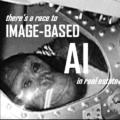We started Purlin in 2018 to answer the not-so-simple question of what the power of AI could do for Real Estate. We knew of endless complexities to simplify and presumed limitless opportunities to create value. To explore what was really possible (and worthwhile), we spent the last several years collaborating with the best brokers, agents and teams, escrow firms, and lenders. Giorgi Chigogidze, our Founder and CEO, presented some of what we figured out at NAR NXT, in Boston, on November 8th, 2024. See a summary of what Purlin’s AI platform can do, or dive deeper into the AI-powered value propositions of each of our AI applications.
Author: Chris Steege
October 15, 2024 by Chris Steege
We’re are honored to announce Purlin has won 2024 Inman Best AI platform! The inaugural AI Awards acknowledge the best AI pioneers that have demonstrated the immense potential of AI to revolutionize the industry. Purlin is proud to have paved the way to safe and effective real estate vertical AI since 2018.
August 24, 2024 by Chris Steege
AI tools can, and should, do much more for real estate professionals than freeing them up from writing ad copy or managing operations. The best AI tools are clever. They know better because they understand context. And they can understand the nuances of human language. For real estate, where context and nuance are everything, the possible value of AI is immeasurable – particularly given heightened regulatory control and the increasing need to demonstrate tangible value to clients.
RISMedia recently featured Purlin’s view on the opportunity, really the necessity, of real estate AIs to understand context and be both careful and clever.
August 13, 2024 by Chris Steege
April 2024, two major real estate companies announced industry-first, image-based AI tools to improve the home exploration and search experience. Purlin has been offering image-based home exploration and search since 2019.
Five years of continued R&D later, our Sparks product is version 4.0 of that technology. In the next five years will there be natural language-based listing search? Purlin has that now too. You can access all of our AI-fueled homeownership journey tools and fast forward your ai journey today. Let the video below show you the allure of Sparks.
July 19,2024 by Chris Steege
We are excited to be a sponsor for the first HousingWire AI Summit, in Dallas. The event brought housing and tech leaders from across the country to bring their answers to a complex question: How will AI change the housing industry? Purlin shared its array of real estate AI tools, including the industry’s only FHA-compliant AI.
April 17, 2024 by Chris Steege
Purlin is proud to be selected as a 2024 REACH Company for its suite of sector-leading Ai tools.
REACH is a unique technology scale-up program created by Second Century Ventures, the most active global fund in real estate technology. Backed by the National Association of Realtors®, REACH leverages the association’s 1.5 million members and an unparalleled network of executives within real estate and adjacent industries. The REACH program helps technology companies scale across the real estate vertical and its adjacent markets through education, mentorship, and market exposure.
April 12, 2021 by Chris Steege
Morgan Beller nails the parallel of Ai and bottled water, and the formula for Ai tech success in the linked piece, “Ai is Like Water.” (link below)
It reminded us of a favorite mantra at Purlin that links Ai to water in a another way. “Be water, my friend” suggested the immortal Bruce Lee, because water becomes the pot or a cup or a bottle and while conforming to its “vessel” it remains water with all of its properties.
Similarly, we believe the “vessel” is irrelevant to Ai doing its job. Our Ai products are designed to be agnostic of UI and to conform to our clients’ needs anywhere and everywhere they desire with a few simple lines of code. A real estate agent’s Ai can live on a lender’s site and connect pre-approvals to home recommendations. Or an escrow company’s Ai can receive orders and answer transaction-related questions on a brokerage’s site. The Ai still flows and dots are connected.
March 26,2024 by Chris Steege
Compliance with Federal and State fair housing regulations isn’t just a legal must, it’s the right thing to do for fairness and inclusivity of AI-powered real estate experiences.
We know this first-hand with Maya, the Ai we built for the Eklund | Gomes Team, with 82% of the conversations focused on real estate searches and other buying and selling inquiries. Purlin’s Ai fairness models ensure safe, truthful, and inclusive natural language listing searches and conversations. Big thanks to the team at Lieb-at-Law who have helped us validate our fairness models.
March 5, 2024 by Chris Steege
Purlin has been nominated for a 2024 Products That Count Product Award. We’re excited that technology product experts see Purlin’s RealAi technology for its potential to “deliver outsized, innovative impact” on the Real Estate industry.
Leading real estate companies use RealAi to engage and convert buyers, sellers, and renters through natural language conversations. It is fair, safe and compliant thanks to proprietary fair housing models. Of all user conversations, 82% are home listing searches or other inquiries about real estate. Customers can easily configure RealAi for their brands and expertise, including deploying several different Ai persona.
February 21, 2024 by Chris Steege
Last year’s tech story was the explosion of GenAi popularity, finding its way into public discourse and companies everywhere. The more powerful narrative in 2024 will be how GenAi can solve real business problems and create value in specific industries. Real estate is one of the biggest of these verticals.
Purlin pioneered ways to harness LLM for real estate in helpful, ethically sound, relevant, and inclusive ways for applications ranging from natural language listing search, content creation, and Ai recommendations. We’re pleased the investment community shares our belief in the massive opportunity for vertical Ai.


























